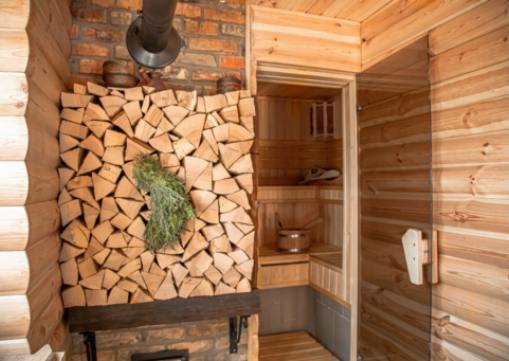As a homeowner with a wood-burning sauna, it is important to prioritize fire safety measures to ensure a safe and enjoyable sauna experience. Understanding the risks of overheating and fire hazards, as well as implementing best practices for maintaining a safe distance between the sauna and combustible materials, is essential for the well-being of both you and your home. Regular inspection and cleaning of the sauna stove are also crucial steps in preventing potential fire incidents. By following these guidelines, you can relax and unwind in your wood-burning sauna with peace of mind.

Guidelines for Maintaining a Safe Distance Between the Sauna and Combustible Materials
Maintaining a safe distance between the sauna and combustible materials is crucial for fire safety in wood-burning saunas. The heat generated by the sauna stove can pose a serious risk to nearby flammable objects, so it is important to follow guidelines to prevent accidents. By keeping a safe distance between the sauna and combustible materials, you can reduce the risk of fire and ensure the safety of your home and garden.
Best Practices for Regularly Inspecting and Cleaning the Sauna Stove
Regularly inspecting and cleaning the sauna stove is crucial for maintaining fire safety in wood-burning saunas. A clean and well-maintained stove not only operates more efficiently but also reduces the risk of fire hazards.
One of the best practices for inspecting and cleaning the sauna stove is to regularly check for any signs of wear and tear, such as cracks or rust. It is important to address any issues immediately to prevent them from escalating and potentially causing a fire.
Additionally, cleaning the stove regularly is essential for preventing the build-up of creosote, a highly flammable substance that can accumulate on the stove and chimney. Creosote is a byproduct of burning wood and can ignite if not removed regularly. Cleaning the stove with a wire brush or scraping tool can help to remove any build-up and reduce the risk of a chimney fire.
Furthermore, it is important to inspect the chimney and ensure that it is clear of any obstructions, such as debris or bird nests. A blocked chimney can prevent proper ventilation and increase the risk of overheating and fire.
In conclusion, regularly inspecting and cleaning the sauna stove is essential for maintaining fire safety in wood-burning saunas. By following best practices and addressing any issues promptly, sauna owners can enjoy a safe and relaxing sauna experience.
Understanding the Risks of Overheating and Fire Hazards in Wood-Burning Saunas
Wood-burning saunas are a popular choice for homeowners looking to enjoy the traditional sauna experience. However, it is important to understand the risks associated with these types of saunas, particularly in terms of overheating and fire hazards.
One of the primary risks of wood-burning saunas is the potential for the sauna stove to overheat. If the stove is not properly maintained and cleaned regularly, it can become clogged with debris and creosote buildup, which can lead to overheating. This can not only damage the stove itself, but it can also increase the risk of a fire breaking out in the sauna.
In addition to the risk of overheating, wood-burning saunas also pose a fire hazard due to the proximity of combustible materials. It is essential to maintain a safe distance between the sauna stove and any flammable materials, such as wood, cloth, or paper. Failure to do so could result in a fire spreading quickly and causing significant damage to the sauna and surrounding area.
By understanding the risks of overheating and fire hazards in wood-burning saunas, homeowners can take the necessary precautions to ensure the safety of their sauna. Regularly inspecting and cleaning the sauna stove, as well as maintaining a safe distance from combustible materials, are essential steps in preventing accidents and maintaining a safe sauna environment.
